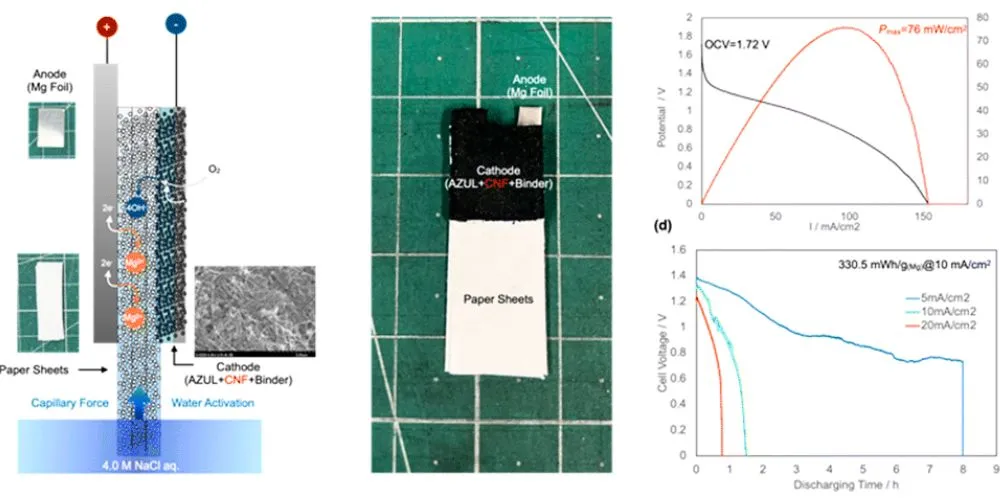Key Points:
- Tohoku University researchers unveil a high-performance magnesium-air battery activated by water and based on paper.
- The battery draws inspiration from plant respiration, mimicking photosynthesis to generate power from oxygen and water.
- Fabrication involves bonding magnesium foil onto paper and incorporating essential components directly onto the paper’s surface.
- Impressive performance metrics include an open circuit voltage of 1.8 volts, a current density of 100 mA/cm², and a maximum output of 103 milliwatts/cm².
Paper has been an indispensable tool of human civilization for centuries, yet, in today’s era, its role extends beyond writing. Researchers at Tohoku University have unveiled a groundbreaking advancement: a high-performance magnesium-air (Mg-air) battery that is paper-based and activated by water, drawing inspiration from the respiration mechanism of plants.
Published in the RSC Applied Interfaces, this research heralds a significant leap forward in sustainable energy solutions, leveraging paper’s inherent properties to pave the way for cleaner, greener technologies.
Lead researcher Hiroshi Yabu highlights the parallels between photosynthesis in plants and the charge-discharge process in batteries. Just as plants convert solar energy into carbohydrates (sugars) called glucose using water and carbon dioxide, this battery employs magnesium as a substrate to generate power from oxygen and water.
Fabricating the battery involved bonding magnesium foil onto paper and directly incorporating the cathode catalyst and gas diffusion layer onto the paper’s surface. Remarkably, the paper battery exhibited an open circuit voltage of 1.8 volts, a current density of 100 mA/cm², and a maximum output of 103 milliwatts/cm².
Moreover, the battery boasts eco-friendly credentials, eschewing toxic materials in favor of carbon cathodes and a pigment electrocatalyst that has undergone rigorous safety assessments. The versatility of this innovation shines through as the researchers tested the battery in pulse oximeter and GPS sensors, showcasing its potential for integration into wearable devices.










